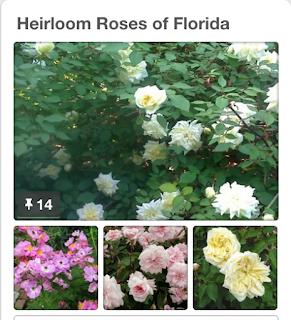 |
| This historical photo of the 1927 hanging was reprinted in the DeLand Sun News as part of a 1964 article about the hanging. |
Although I generally prefer to write about cozier domestic doings, the reality of everyday life in frontier Florida included the occurrence of legal hangings. Illegal too, as in lynchings, but that's a topic for a different post. This post's focus is on legal instances, which some people considered a fine source of entertainment.
In 1907, a Catholic priest in Fernandina took to the pulpit to denounce the "morbid curiosity of the people who rushed and crowded around the jail" during the execution of a man named John Brown. Father John O'Brien chastised those who craved a look at the man or a chance to "see him as the trap was sprung."
The priest had been the former rector of St. Monica's Catholic Church in Palatka. The report of his sermon was first printed in the Fernandina paper and then carried in the Palatka Daily News on Dec. 27, 1907. Under the headline "Roasts Morbidly Curious," the article said Fr. O'Brien spoke with kindness but "severely condemned those who were present upon occasions of this kind only to see a condemned felon die."
Fr. O'Brien had provided spiritual counsel to Brown, which was why he was present at the hanging and noticed the crowd's attitude. In a comment years ahead of his time, Fr. O'Brien told his congregation he felt capital punishment "ought to be abandoned if people looked upon it as they appeared to do when Brown met his fate."
The article concluded by saying O'Brien's sermon met with approval not only from his congregation, but from the people of Fernandina in general.
But memories can be short. Several miles downstate, and exactly 20 years later, a large crowd gathered for the last hanging of a state prisoner to be carried out in Florida. It took place in downtown DeLand in April 1927.
In eerie coincidence, the condemned man in the 1927 hanging was also named Brown. That name, though, was an alias. Charles Brown's real surname was some variation of Pisella, Pisellia or Piselli.
In a 1964 writeup about the hanging, the DeLand Sun News noted that more than 2,000 people attended the execution in the heart of DeLand. The city's population in 1920 was 3,324, and in 1930 it was 5,246. You do the math.
In a 1964 writeup about the hanging, the DeLand Sun News noted that more than 2,000 people attended the execution in the heart of DeLand. The city's population in 1920 was 3,324, and in 1930 it was 5,246. You do the math.
The spectator count was at least the equivalent of 38% to 60% of the town's population, if not more. The crowd swelled the city. To compare, had that hanging taken place in 2014 it would have drawn between 11,000 and 17,500 people to the center of town, or more. That's a sorry statistic. No wonder Fr. O'Brien got upset back in 1907.
At least, in 1927, spectators seemed somewhat cognizant of the event's seriousness. In Sun News staff writer Bernard Bishop's 1964 history article about the 1927 hanging, he wrote, "The crowd was silent as the rope swung back and forth ..."
May they all rest in peace.
At least, in 1927, spectators seemed somewhat cognizant of the event's seriousness. In Sun News staff writer Bernard Bishop's 1964 history article about the 1927 hanging, he wrote, "The crowd was silent as the rope swung back and forth ..."
May they all rest in peace.


